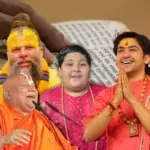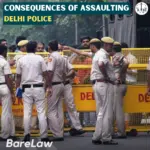
PM Modi Quotes – ‘One Nation, One Election ‘
Introduction: ‘ One nation, One election ‘
“Power tends to corrupt, and absolute power corrupts absolutely. Great men are almost always bad men, even when they exercise influence and not authority; still, more when you superadd the tendency of the certainty of corruption by authority.”
– Sir John Dahlberg-Acton
It all started in 2019 when the current ruling party ensured its political dominance in the lower house of the Parliament.
Even before, in 2015 and in 2018, the Policy reports and Law Commission of India recommended the Union and election commission considers the implementation of simultaneous elections in India.
Since then, the debate and discussions have touched their peak, which also saw a major push from the side of the Prime minister of India recently.
India, being a Union of states, is well-known for its population, vast diversity, and differing political needs among different people within the country.
This is the reason which led the constituent assembly members to adopt a federal structure with a lesser focus on unitary features in its written constitution.
The issue with respect to the recommended simultaneous elections is that it would ultimately defame the idea of the federal structure by pushing local parties behind the national parties.
Also, as per reports, such an election will focus national parties more on the Electoral College among people.
This current article will be looking into the background of simultaneous elections, their pros, and cons,
and whether there is a need for simultaneous elections than upholding the regional parties and their agenda at the regional level in a federal country like India.
Background on Simultaneous Elections:
The term ‘simultaneous elections’ and its usage doesn’t look new to the Indian election system.
As per the 79th Parliamentary standing committee’s report in the year 2015, elections between 1951 till 1967 were reported as simultaneous to state assemblies and lower houses.
To be precise on how simultaneous elections works, unlike the existing election process,
instead of conducting elections in different states across the country every year, it will be held only once in five, year-either in a single phase or in multiple stages.
After the disruption from the fourth Lok Sabha elections, the term period of five for the center and the state legislature has been expressly brought into action.
There are lots of economic advantages to conducting simultaneous elections,
but there are important questions about federalism that needs to be answered before it is implemented properly.
A few of the advantages that are quoted by those who need it to be implemented are,
- The cost of an election in this largest democratic country would be brought down and
- Helps the government to focus on governmental aspects rather focusing on electoral aspects, especially for the national parties.
- It has been stated that simultaneous elections will also control corruption and illegal financing of elections.
What are the Legal intricacies to effectuate Simultaneous Elections?
There are few legal difficulties in effectuating the recommended Simultaneous elections in India.
These include, firstly, the Amendment to the existing Representation of People’s act, 1951,
in order to define the terms ‘Simultaneous elections’ (section 2) and sections 14 and 15.
Secondly, the Lok sabha and state legislative assemblies’ rules of procedure and conduct of business requirements are to be amended.
Such an Amendment, as per social analysts, would replace the No-confidence motion with the phrase called ‘Motion of Constructive Vote of No-Confidence’.
This is to give away the issue of the dissolution of the Lok sabha.
One of the most important and critical intricacies would be, enabling a political compromise, i.e.,
where the states which have not completed their full term of five years of an elected government have to sacrifice their remaining period, and indirectly,
the state could be required to let go of their regional identities.
This is where we should look at both regionalism and Indian federalism hand in hand.
Simultaneous Elections and ‘Unique Indian Federalism’:
It has been stated above that the states which have not completed their full term of five years of an elected government have to sacrifice their remaining period, and indirectly,
the state could be required to let go of their regional identities. Indian federalism is unique,
and in no way can it be compared with any other federal structure across the globe.
Cultural diversity within a country would also be a reason for adopting the federal structure in any country.
India is one such country with extreme diversity among the people.
If we look into the historical aspect and pre-independence period, people within this territory differed both culturally and traditionally.
But, the arrival of the Englishmen led them to unite ideologically.
This helped the post-independent government to frame the constitution for the Union of India and not for anything else.
This cultural and traditional diversity forced the framers of the body to enable a federal structure instead of a unitary or confederation.
Having known for its diversity and regionalism, Simultaneous elections would confuse the common voter both during Lok sabha and state legislative assemblies’ elections.
If a national party influences the regional or the state voters where the national party has no significance,
then that factor would be the base for confusion.
This would ultimately degrade the importance and intensity of regional parties,
which arose solely to understand and regionalize the politics among the people of the state.
Fortunately, the party which comes to power from such a single election could destabilize the nature of democracy and the importance of regionalism.
It would be constitutionally invalid if a particular community of people has not been allowed to protect their identity as a whole or as an individual.
Importance of Co-operative Federalism In India:
Before looking into whether cooperative federalism is still a myth or has been serving the best of it, it is important to define the nature of cooperative federalism.
Co-operative federalism is a subset of federal systems. Having known that there will be two-tier governments in a federal country,
it is relevant to know that in cooperative federalism, the center and state governments carve up a horizontal relationship with each other.
To be precise, they cooperate together, keeping in mind the larger public interest. This togetherness can be witnessed in areas like the formulation and execution of policy measures across the country.
This need for cooperation has also been enlisted in the 7th seventh schedule of the constitution,
where three lists have been provided to states and centers to legislate and execute on the same.
The answer as to whether co-operative federalism is effective or not can be found in financial,
administrative, and legislative relations between the two-tier governments.
It can be inferred from this that politics have also influenced the cooperative federalism between center and state.
This question should be proactively reacted to, and the same should be looked up for discussion.
There should be more transparency in cooperative federalism in order to promote the welfare of the people.
The politics should never control any central government to hold back the welfare schemes of states.
Conclusion/ Suggestions:
Indian constitution expects India to be the Union of states and not a nation with a single identity, single leader, and a single government.
If this is the case, then the nature of the political system of our nation would revert back to autocracy or totalitarianism.
Given the fact that it is still inappropriate and with recent past examples showing a downward curve relationship between states and unions,
simultaneous elections would ultimately increase the existing instability.
One of the few solutions is to give a strong opposition in the center to protect democracy.
Many leaders have felt that, in a country like India, there should be state autonomy at the regional level.
This is to ensure that powers are decentralized, and local voices are heard appropriately.
Secondly, the states should be strong enough to bargain their shares from the center.
They should also take part in the policy-making process.
In that case, it can be concluded from the above facts that the co-operative federalism should be carved a little sharper than exiting now, and both the governments should focus on the welfare of the people and not the politics such as simultaneous elections.
Bibliography:
Books:
MP Jain, ‘Constitutional law’, Part 1 (Chapter 1)
M Laxmikanth, ‘Indian Polity’, 5th Edition, (2017)
Websites:
- http://164.100.47.193/Refinput/New_Reference_Notes/English/04022020_105450_102120474.pdf
- https://www.drishtiias.com/pdf/cooperative-and-competitive-federalism-in-india.pdf
- https://eci.gov.in/files/file/9236-proposed-election-reforms/
- https://www.prsindia.org/sites/default/files/bill_files/bill200_20081202200_Election_Commission_Proposed_Electoral_Reforms.pdf
- http://niti.gov.in/writereaddata/files/document_publication/Note%20on%20Simultaneous%20Elections.pdf
- http://164.100.47.5/newcommittee/reports/EnglishCommittees/Committee%20on%20Personnel,%20PublicGrievances,%20Law%20and%20Justice/79.pdf
- https://www.latestlaws.com/articles/one-nation-one-election-why-and-why-not/
- https://www.thenewsminute.com/article/one-nation-one-election-arguments-and-against-proposal-103927
- https://www.indialegallive.com/column-news/one-nation-one-election-modi-lok-sabha/



